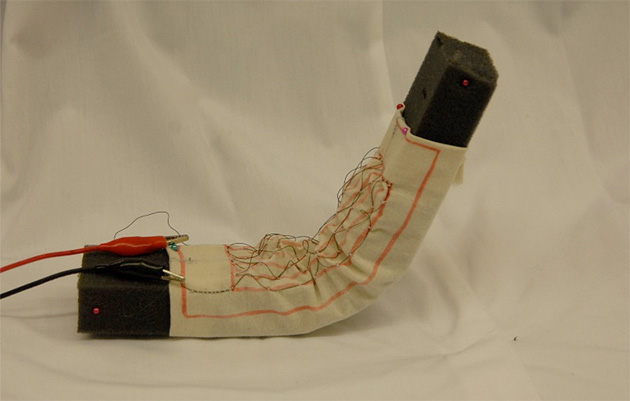
When we think about robotics, we don’t typically think about a lump of inert foam — but with the right clothing, it counts. Researchers at Purdue University are developing a robotic fabric that can be used to make so-called “soft” robots out of foam and other lightweight materials. The team has embedded fabric with a flexible polymer that changes shape and rigidity when heated, allowing it to be contracted or relaxed at will. Wrap a specifically assigned swatch of this cloth around a piece of foam, and it can be coaxed into bending, wriggling or moving in specific ways. “We will be able to design reboots on the fly,” Purdue University’s Rebecca Kramer says. “Anything can be a robot because all of the robotic technology is in the fabric or skin.”
The material could conceivably be used in space missions, as an easy means to build exploration robots with cheap, lightweight material that can be transported easily.
via Engadget
Image: Purdue University / Rebecca Kramer





